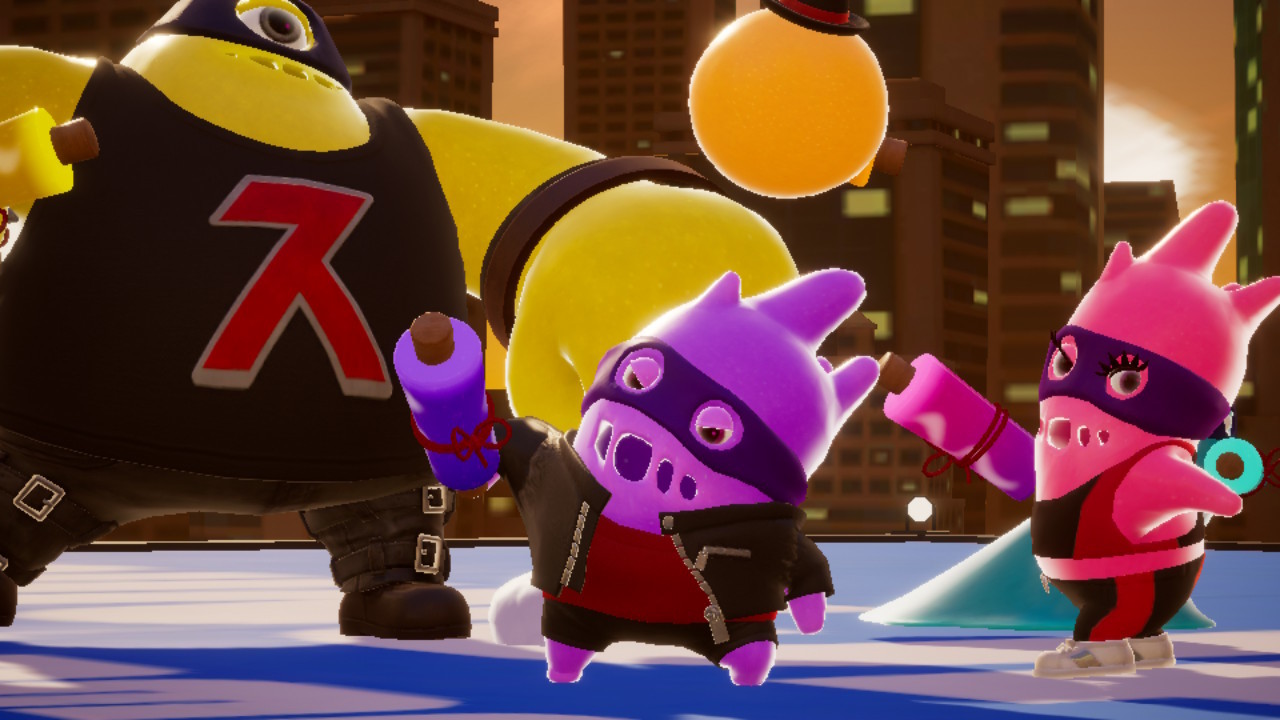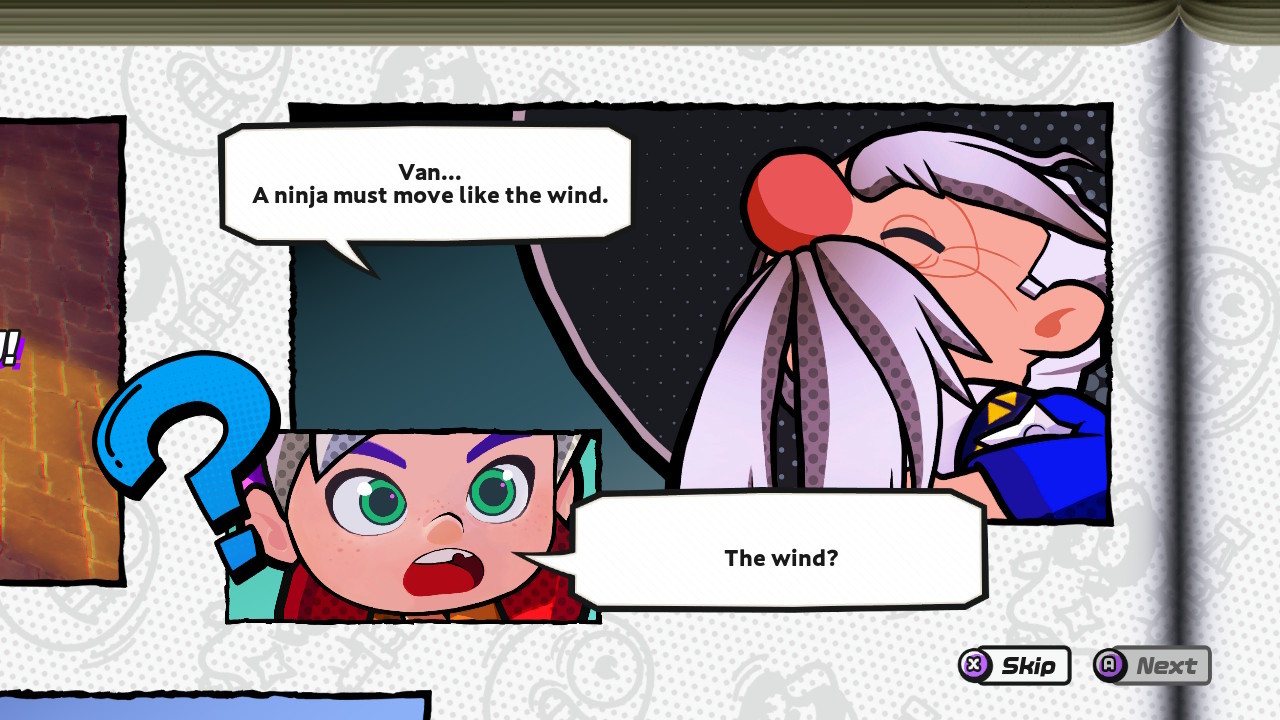Ninjala is a unique melee-focused multiplayer live game with tons of style and depth, but for now it’s light on content and heavy on microtransactions.
In a landscape already oversaturated with live games, differentiation is vital. Ninjala attempts to forge its own path through a combination of bubbly style and unique melee mechanics. And though it’s light on content and heavy on microtransactions at launch, those two qualities are enough to make it stand out, and could give it the necessary staying power to live on long-term.
The mechanical differentiation comes from eschewing the usual shooter tropes of competitive online games. Instead, Ninjala is a multiplayer game focused primarily around melee combat, forcing tight confrontations between kid-ninjas with limited range. That gives it a feeling akin to a game like Devil May Cry, as you may see an opponent from a distance and charge in to do battle and then dash off quickly. The attack button is mapped to the shoulder like a traditional shooter by default, but I found a different control preset that set it to a face button much more natural to the character-action feel.
The weapons are limited to only three types–balanced katana, powerful hammers, and ranged yo-yos–but they produce a surprising amount of variety. The weapon types come with a handful of design variants, each with their own special properties and powerful ultimate ability. Finding your preferred playstyle is a matter of narrowing down the options, first by toying with the weapon classes themselves and then diving into the next layer to find which combination of special abilities suits you. None of the weapons feel obviously overpowered compared to the rest, so it really comes down to personal preference.
Closing the gap on opponents is zippy and effortless, especially as you get the hang of the dash maneuver enabled by gathering special ability power littered about. Each of the pint-sized ninjas can stick to the sides of buildings to run up or across them, and they dash-attack and float while fighting to create mid-air encounters. The decision of whether to charge into battle or gather power for your special moves adds a layer of strategy before you ever start to take swipes at your opponents. It also incorporates stealth options like decoys and disguises, but your ultimate goal is to rack up takedowns as quickly as possible. Since hiding out wastes valuable time and doesn’t provide much combat advantage, it’s barely ever useful.
For all its mechanical depth, though, Ninjala does a poor job onboarding new players. The game explains what each of the functions does in the abstract, but doesn’t contextualize when or why you might need to use them. And when you’re caught up in an attack, it’s not always clear where it’s coming from or how to counter it, especially if you’re near a corner and the camera wobbles wildly. In the event that you do counter an opponent with a matching attack, you’re thrown into a miniature rock-paper-scissors mechanic using the directional pad to determine the winner. Losing one of these matches feels inelegant and frustratingly random.
The emphasis on microtransactions is heavy throughout, even for a free-to-play game. It offers paid story content, a battle pass for extra cosmetic rewards, a deluxe battle pass that skips ahead several tiers, and packages of in-game currency called Jala that can buy cosmetics or randomly roll for alternate weapon skins.

Only one short episodic story is available for purchase at launch, with more promised on the way. The plot is cute and quick, focusing on ninja aliens and the hints of some conspiracy, but for the most part it’s a glorified tutorial. It lets you practice your ninja moves against AI enemies, but they’re a poor substitute for human opponents. It’s strange to require a purchase for a brief tutorial that feels like it should be part of the standard experience.
Most of this is strictly cosmetic, with one notable exception. You can equip and power up Shinobi Cards, which augment your abilities with effects like decreasing your cooldown or detecting enemies behind you. These provide a clear competitive advantage, but unlocking additional cards or extra slots in which to equip them costs medals, which you earn by leveling up in competitive modes and finishing the story content. Earning enough medals to do just about anything with Shinobi Cards comes at a glacial pace even with the battle pass and story, so doing it without both would be a slog.
Stylistically, Ninjala shares a lot in common with Nintendo’s own competitive game, Splatoon. The characters are bubbly, animated kids with chubby cheeks, big gap-toothed smiles, and wild anime-spiked hairdos. The weaponry is similarly quirky and cute. A katana might be a scroll or a giant corncob, the hammer could be fashioned after a sushi platter, and the yo-yos are often actual yo-yos or fidget-spinners. The magic that fuels your ninja abilities is bubblegum, rendered in bright hues like hot pink and electric yellow. It’s a visual treat with tons of personality.

That robust style isn’t quite matched by the substance so far. Ninjala suffers from a lack of content, consisting of only two modes and two maps. Battle Royale, a somewhat confusing label given the current use of the term as shorthand for massive multiplayer, is a small, eight-player free-for-all; Team Battle splits players into teams of four and keeps track of a cumulative score. You can take part in ranked matches in either mode, but the limited options mean that even the creative combat starts to feel repetitive long before fully plumbing the depths of the battle pass.
The maps are similarly content-light, but the problem is exacerbated by how lopsided they are in quality. Eagle City is a large chunk of cityscape with tons of verticality. The broad setting lets you use all the tools at your disposal, from stealth to wall-running to the gum-ziplines that connect some of the high-rises. It’s an all-around great design that shows the strengths of Ninjala’s combat. By comparison, the second map, WNA Academy, is a small, tight space that renders stealth essentially useless and has very few vertical spaces to climb. Matches there quickly devolve into players or teams converging in the middle and smacking each other silly. It’s much more chaotic and doesn’t show the game at its best.
Those limitations mean there isn’t much to do in Ninjala, and what content is present almost requires a battle pass to be fully enjoyed. But what we have so far is a solid foundation. The battle fundamentals are well-designed and unique, and the visual flair is absolutely bursting with personality.
